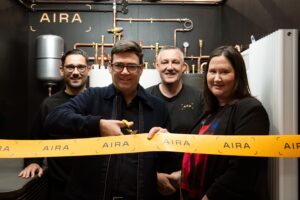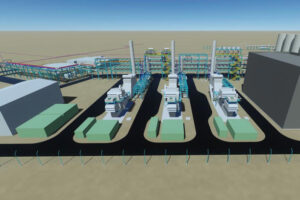The green campus that makes users part of its sustainability
Even if you invest heavily in technology, the way we use buildings can make or break their environmental performance. That’s why a university in Australia is engaging students to ensure they play their part in creating a genuinely green campus
Go online and you’ll see that an increasing number of hotels are touting their green credentials. Their rooms have card readers that turn off the lights when a guest leaves and notices in the bathroom advertising the use of organic products and encouraging reuse of towels.
Some hotels have even gone as far as offering guests incentives such as vouchers for not using room services or free meals when they ride the gym bikes to generate energy. These and other initiatives not only save the hotels money, they are seen as attractive to a growing niche market of ‘eco conscious’ clients.
However, sustainability is a far more complicated issue for other types of large-scale accommodation, such as university student residences. While design is increasingly focused on improving the environmental performance of these buildings, this does not automate out all occupant behaviour and that behaviour is critical. Residents need to work with their building to achieve the best outcomes, but that concept is not well understood in collective living arrangements where responsibility can be transferred.
This was evident in a series of interviews of students that I conducted several years ago, where a common response was that the primary responsibility for the sustainable performance of their residential college lay with administration, who ‘controlled’ the operation of the building. More recently, Bogazici University in Istanbul conducted a survey which found that 37% of residents in Hamlin Hall (which had recently received LEED Gold accreditation) did not even know they were living in a ‘green’ building.
Given results like these it’s no surprise to find an increasing effort on campuses around the world to green student accommodation through a combination of clever design and occupant engagement – effectively a strategy of operating buildings that educate.
 A good example of this is the Lena Karmel Lodge, a residence for 560 students, located on The Australian National University (ANU) campus in Canberra. The Lodge uses design and operations (much of it mirroring the national sustainability standards for multi apartment residences) that make the building’s environmental performance ubiquitous to engage the residents.
A good example of this is the Lena Karmel Lodge, a residence for 560 students, located on The Australian National University (ANU) campus in Canberra. The Lodge uses design and operations (much of it mirroring the national sustainability standards for multi apartment residences) that make the building’s environmental performance ubiquitous to engage the residents.
Certainly the environmentally sustainable design elements of the building are innovative and reflect best practices in the use of natural light and ventilation, as well as technologies that conserve energy and water. Photovoltaic panels prominently mounted on the roof generate power and rainwater is harvested for toilet flushing. Sensors and mix mode environmental controls minimise the energy used by air-conditioning and improve the efficiency of lighting while on the ground level there is ample secure parking for bicycles as well as charge points for electric vehicles. There are green spaces such as courtyards and the roof provides outdoor areas for study and socialising that sit beside gardens where students can grow their own food.
However, the most important aspect of the building is the way it works to educate the residents.
Many of the building systems are used as visual cues, reminding people they are in a ‘green residence’. Real-time consumption of electricity, water and gas is monitored using meters on every floor and these data are displayed on large ‘dashboards’ installed in common areas. The dashboards also record when students use the central staircase rather than the elevators, with this information being displayed as the number of times the residential community has climbed the equivalent of Mount Everest in a month.
 The data are used as part of induction sessions and in ongoing sustainability education programmes to show the impact of individual behaviour on the environmental footprint of the Lodge, particularly in water and energy consumption.
The data are used as part of induction sessions and in ongoing sustainability education programmes to show the impact of individual behaviour on the environmental footprint of the Lodge, particularly in water and energy consumption.
The Lodge also runs workshops to show residents how to grow their own vegetables in the roof top garden while on the ground level a Community Organic Food Co-operative not only allows them to purchase sustainable food, but also provides information on the economic and environmental benefits of locally grown produce.
Integrated into all this are number of ‘fun’ initiatives that are intended maintain interest and increase community engagement. Each year, environment officers are selected from the residential community and they coordinate a variety of environmentally-themed academic and social events. The Lodge management is involved as well and supports formal competitions between floors where the winners not only have the satisfaction of knowing they had the lowest energy and water consumption for the month, but also enjoy the spoils of victory in the form of a dozen large pizzas delivered by their common room!
Ask residents and it is clear that the ‘Lena Karmel approach’ is working. They have a better understanding of their building and how their behaviour effects its performance.
Importantly, this strategy has something to offer the wider community. An approach that can be applied to buildings of all types and functions, and one that can be can be summed up in simple terms: design and operate to engage and educate.















